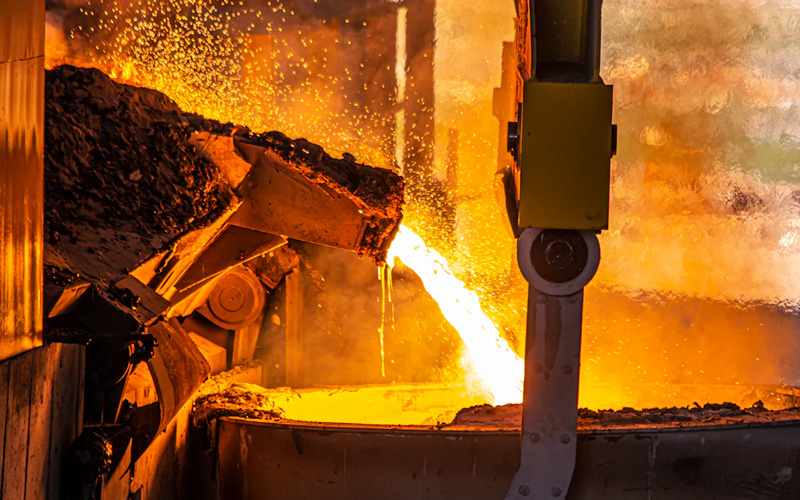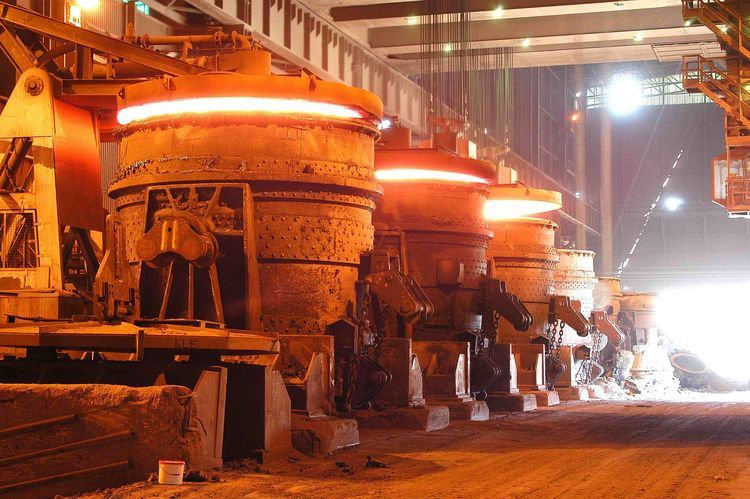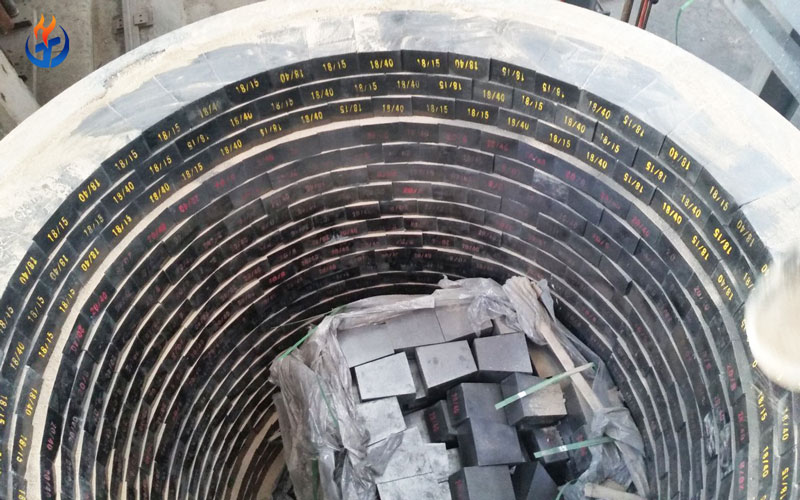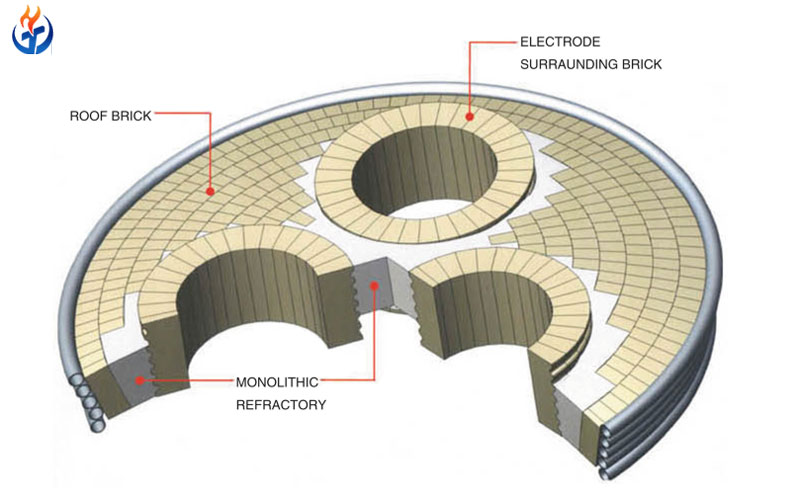Aluminum melting furnaces operate at extremely high temperatures and are exposed to aggressive chemical and mechanical environments. To maintain thermal efficiency and structural integrity, these furnaces require specially engineered refractory linings that can withstand the harsh operating conditions.
Choosing the right aluminum refractory materials is crucial not only for energy conservation and productivity but also for extending the service life of the furnace. In this article, we will explore the different types of melting furnace bricks, key properties required for aluminum applications, lining configurations, and best practices for installation and maintenance.

Why Refractory Linings Matter in Aluminum Melting Furnaces
Aluminum melting processes often occur at temperatures ranging from 650°C to 900°C. During operation, furnaces are exposed to:
High-temperature corrosion from molten aluminum and slags
Thermal cycling during heating and cooling phases
Mechanical abrasion from charge materials
Chemical attack from fluxes and cleaning agents
Without a suitable refractory lining, the furnace walls can deteriorate rapidly, leading to metal contamination, heat loss, and increased downtime. A high-performance aluminum refractory lining helps in:
Minimizing heat loss
Preventing molten metal infiltration
Reducing maintenance frequency
Enhancing energy efficiency
Ensuring operational safety
Key Requirements for Aluminum Refractory Materials
Refractories used in aluminum melting must meet specific criteria to withstand the metal’s reactive nature and operating conditions:
A. Non-Wetting Properties
Aluminum can aggressively react with certain refractory materials. To prevent the molten metal from infiltrating the lining, the chosen refractories must exhibit non-wetting behavior. Additives like boron nitride or specially formulated coatings can enhance this property.
B. Resistance to Chemical Attack
Molten aluminum alloys often contain fluxes (chloride and fluoride-based), which can be highly corrosive. The melting furnace bricks must resist chemical degradation from both fluxes and molten aluminum.
C. Thermal Shock Resistance
Frequent temperature cycling can cause cracking or spalling. Refractories should have high thermal shock resistance to handle the repeated heating and cooling during furnace operation.
D. Low Thermal Conductivity
To improve energy efficiency and reduce heat loss, low thermal conductivity is preferred, especially for backup linings.
E. Mechanical Strength
The refractory lining should resist abrasion from charging solid scrap materials and retain its shape under mechanical stress.
Common Types of Refractory Materials for Aluminum Furnaces
3.1 High Alumina Bricks
High alumina bricks (containing 45-90% Al₂O₃) offer excellent refractoriness and corrosion resistance. For aluminum melting, bricks with 60-75% alumina are commonly used.
Advantages:
Good resistance to slag attack
High mechanical strength
Affordable
Disadvantage:
May require anti-wetting coatings
3.2 Mullite Bricks
Mullite (3Al₂O₃·2SiO₂) bricks provide excellent thermal shock resistance and are stable at high temperatures. Their low thermal conductivity makes them suitable for both working and backup linings.
3.3 Silica Bricks
Used in specific zones where high refractoriness and strength are required. However, their use in aluminum furnaces is limited due to poor resistance to fluxes.
3.4 Castable Refractories
Monolithic aluminum refractory castables are widely used for furnace linings, burner blocks, and hearths.
Types:
Low Cement Castables (LCC)
Ultra-Low Cement Castables (ULCC)
Insulating Castables
Castables can be gunned or poured into place and offer flexibility in design.
3.5 Ceramic Fiber Modules
For furnace roofs or insulation layers, ceramic fiber modules are often applied due to their low heat storage and excellent insulation performance.
Note: Ceramic fibers are usually not used in direct contact with molten metal.
Refractory Lining Configuration
A typical aluminum melting furnace lining is a multi-layer system, consisting of:
Hot Face Lining (Working Layer)
Directly exposed to molten aluminum. Requires high corrosion resistance and non-wetting characteristics. High alumina bricks, castables, or fused silica-based materials are often used here.Intermediate Layer
Acts as a buffer, often made of dense insulating bricks or medium-density castables.Backup Insulation Layer
Minimizes heat loss to the furnace shell. This can include insulating bricks, ceramic fiber boards, or lightweight castables.Protective Coating (Optional)
A non-wetting coating is often applied to prevent molten aluminum penetration. These may include boron nitride, graphite, or proprietary coatings designed for aluminum contact.
Typical Refractory Zones in Aluminum Furnaces
Different furnace zones experience different operating conditions. Here’s how melting furnace bricks are selected for each:
A. Hearth (Bottom)
Faces direct contact with molten metal
Requires excellent resistance to chemical attack
Material: Dense alumina bricks or low-cement castables
B. Sidewalls
Subjected to metal splash and abrasion
Require high strength and non-wettability
Material: High alumina or mullite bricks, possibly with anti-wetting coatings
C. Furnace Roof
Exposed to radiant heat and flue gases
Must have low heat storage and good insulation
Material: Ceramic fiber modules or lightweight insulating castables
D. Burner Blocks & Tap Holes
Experience flame impingement and thermal cycling
Require high thermal shock and erosion resistance
Material: Precast shapes made of ultra-low cement castables
Best Practices for Installation
Proper installation is key to ensuring the performance and longevity of aluminum refractory linings:
Surface Preparation: Ensure surfaces are clean, dry, and free of contaminants
Anchoring Systems: Use stainless-steel anchors with insulating sleeves for castable installations
Expansion Joints: Allow for thermal expansion to prevent cracking
Curing and Dry-Out: Follow manufacturer’s recommended schedule for curing and drying refractory castables
Application of Coatings: Apply anti-wetting coatings only after full dry-out and prior to exposure to molten metal
Conclusion
Refractory linings for aluminum melting furnaces are a vital component of furnace efficiency, longevity, and safety. Whether you’re building a new furnace or relining an existing one, selecting the right aluminum refractory materials and following best practices can significantly impact your operation’s success.
From high alumina bricks to advanced castables with anti-wetting properties, the right solution depends on your specific furnace design, alloy composition, and operating conditions. Regular maintenance and the use of modern refractory technologies can ensure optimal performance and minimal downtime.
If you’re seeking expert advice or high-quality refractory materials for your aluminum furnace, don’t hesitate to contact our team. We have over 20 years of experience in supplying durable, efficient melting furnace bricks and customized refractory solutions for the aluminum industry.



